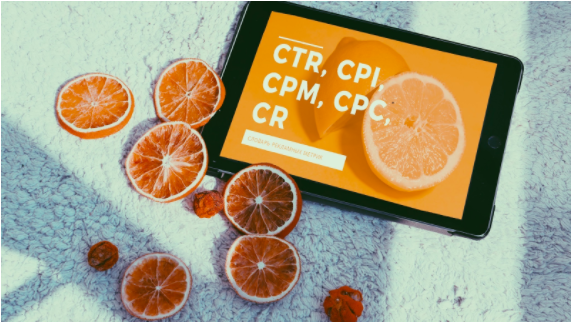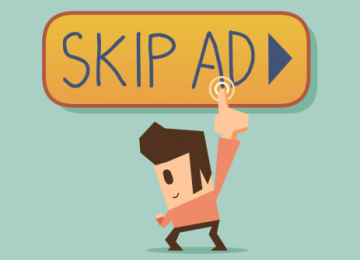Basics for Marketers begin join in Google ads: CPA, CPC, CPM, CPS and CPI
- 12-01-2021
- CPA
- What is CPA?
Average cost per action (CPA) is the average amount you’ve been charged for a conversion from your ad such as buying goods, participating in events, downloading application software, etc.CPA is calculated by dividing the total cost of conversions by the total number of conversions.
CPA= Total Cost/ Total Conversions
- Outstanding features of CPA
Advantages: Because based on paying action fees (buying goods, subscribing to newsletters, or leaving contact information, ...), the amount of advertising spending in the form of CPA will be quantitative results that are tighter than that of CPC and CPM.
Disadvantage: precisely because efficiency metrics are based on the final action, the cost per effective click is not small. If you have a lead file and your goal is to order, CPA is a good choice. But if it's just to convert a lead file to the number of users who try the product for free, the effect may not be satisfactory. Moreover, if you do not have a clear and transparent marketing management mechanism for CPA, you will find it difficult to know if your campaign is effective or is only costing.
⇒ Therefore: Let using CPA when your customer data file is highly convertible, or your marketing campaign goals are clearly measurable, such as converting 1,000 leads to 100 successful orders.
- CPS
- What is CPS?
CPS (Cost Per Sale) is an advertising method in which the cost of advertising is paid based on the sales revenue. When a customer makes a purchase on the retailer's page after being redirected through an advertising link or banner placed on the linked site, the retailers will deduct a portion of their revenue to pay. for linked sites.
CPS = Total cost / Total sales number
- Outstanding features of CPS
CPS is a form of low risk and high return. You will only have to pay advertising costs once you receive a successful order. Unlike CPS, for CPA, you will have to spend immediately on advertising costs when users click on your ad link (but not sure if they purchased or left registration information).
⇒ So you should use CPS if you only have a very small cost for the marketing campaign, but want to measure and utilize the effectiveness of each co-ad.
- CPM
- What is CPM?
CPM (Cost Per Mile) is a type of advertising paid by the number of impressions. The more visitors your website has and the more pages they view, the more you get paid. Your job is just to place ads on the website, to develop so that more people know about your website.
- Outstanding features of CPM
Pros: Not too difficult or take too long to be able to set up and launch a CPM campaign. Furthermore, it's pretty easy to estimate the cost it takes to run CPM.
Cons: for marketing campaigns aimed at revenue efficiency (number of orders, number of people leaving contact information, number of people registered to participate in events, ...), CPM is not a form of advertising that is economical and efficient. What's more, if your campaign's goal is the number of people who click on the landing page to take action, then it will be very difficult to measure campaign effectiveness using CPM. This is because a single CPM ad charge occurs even if a user doesn't click on it, but only watches your ad appear on the website they're viewing.
⇒ Using CPM Ads for campaigns to build brand image, promoting a new product or service is a good choice.
- CPC
- What is CPC?
CPC (Cost Per Click) is the amount advertisers cost each time a user clicks on their advertising.
- Outstanding features of CPC
CPC is good for Lead Generation (finding and engaging users). If you have a clear definition of how to lead to stimulate users, CPC is the best choice because this type of ad will save you the best with a higher conversion rate. CPC should be used when a customer has an existing need and is easy to make a decision (action) when your ad content is good enough and a reasonable call to action (CTA).
⇒ CPC is a fairly popular form of advertising and has the ability to measure the effectiveness of the campaign to find orders or lead. You should use CPC if there is a small, limited cost of running your ads. But remember, you need to clearly identify your target audience, and use techniques to prevent click-hacks and virtual clicks to avoid cost loss.
- CPI
- What is CPI?
CPI (Cost Per Install) is the cost an advertiser will pay when a customer downloads and installs applications, software or other types of digital content through the system's promotional link.
- Outstanding features of CPI
Advantages: the advantage of CPI is that it has the ability to attract and measure the number of people downloading the application quickly compared to other forms of advertising.
Disadvantage: Costing for an CPI is not cheap, as competition in the mobile app advertising market is getting fiercer. What's more, when running CPI, you might even be faced with an amount of app downloads that you don't actually use - that is, not yet called a "user". Furthermore, when the actual load is low, it's very likely that your app's ranking in the app market will be adversely affected, or even locked permanently. This situation is quite common when the opponent is playing against you.
⇒ CPI is the best choice when you're running ads for a mobile app, software, or other type of digital content.
- Other popular concepts
In addition, there are other concepts that you may be interested in or questioned:
- CPD is Cost Per Duration
- CPO is Cost Per Order
- CPL is Cost Per Leads
- CTR is Click through rate
Jamie - 7/1/21

